-
 Bitcoin
Bitcoin $106,754.6083
1.33% -
 Ethereum
Ethereum $2,625.8249
3.80% -
 Tether USDt
Tether USDt $1.0001
-0.03% -
 XRP
XRP $2.1891
1.67% -
 BNB
BNB $654.5220
0.66% -
 Solana
Solana $156.9428
7.28% -
 USDC
USDC $0.9998
0.00% -
 Dogecoin
Dogecoin $0.1780
1.14% -
 TRON
TRON $0.2706
-0.16% -
 Cardano
Cardano $0.6470
2.77% -
 Hyperliquid
Hyperliquid $44.6467
10.24% -
 Sui
Sui $3.1128
3.86% -
 Bitcoin Cash
Bitcoin Cash $455.7646
3.00% -
 Chainlink
Chainlink $13.6858
4.08% -
 UNUS SED LEO
UNUS SED LEO $9.2682
0.21% -
 Avalanche
Avalanche $19.7433
3.79% -
 Stellar
Stellar $0.2616
1.64% -
 Toncoin
Toncoin $3.0222
2.19% -
 Shiba Inu
Shiba Inu $0.0...01220
1.49% -
 Hedera
Hedera $0.1580
2.75% -
 Litecoin
Litecoin $87.4964
2.29% -
 Polkadot
Polkadot $3.8958
3.05% -
 Ethena USDe
Ethena USDe $1.0000
-0.04% -
 Monero
Monero $317.2263
0.26% -
 Bitget Token
Bitget Token $4.5985
1.68% -
 Dai
Dai $0.9999
0.00% -
 Pepe
Pepe $0.0...01140
2.44% -
 Uniswap
Uniswap $7.6065
5.29% -
 Pi
Pi $0.6042
-2.00% -
 Aave
Aave $289.6343
6.02%
How to distinguish between washing and real decline after the moving average crosses?
A moving average crossover can signal a trend change, but traders must confirm with volume and on-chain data to avoid false signals from wash trading.
Jun 17, 2025 at 04:28 am
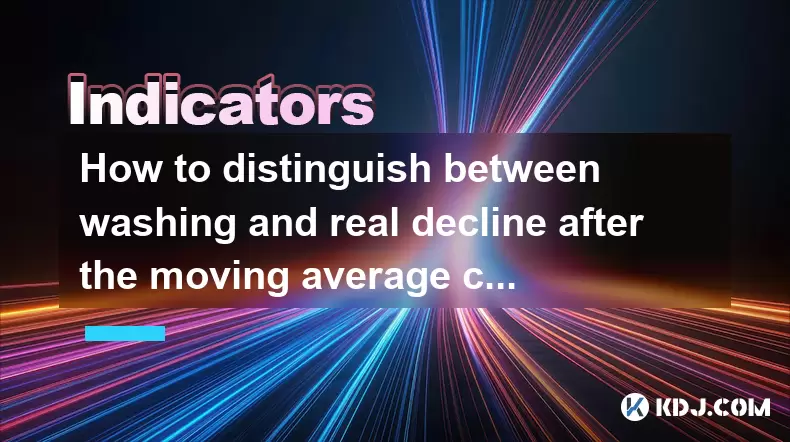
What Is a Moving Average Crossover?
A moving average crossover occurs when a short-term moving average crosses above or below a long-term moving average. This technical indicator is widely used by traders in the cryptocurrency market to identify potential trend reversals. A bullish signal is typically generated when the short-term moving average rises above the long-term one, while a bearish signal appears when it falls below. However, not all crossovers lead to significant price movements—some are false signals caused by market manipulation or temporary volatility.
Understanding the Concept of "Washing" in Crypto Trading
In cryptocurrency trading, the term "washing" refers to artificial volume creation through self-matching trades or coordinated transactions designed to mislead other traders. Wash trading can distort technical indicators like moving averages, making it difficult to distinguish between genuine market sentiment and fabricated activity. When a moving average crossover coincides with unusually high but meaningless volume, it may indicate that the market is being manipulated rather than undergoing a real trend change.
Key Differences Between Real Decline and Washing After a Crossover
After a moving average crossover, traders must assess whether the resulting price movement reflects a real decline or just market noise. A real decline usually involves sustained selling pressure, lower liquidity, and a breakdown in key support levels. Conversely, washing often manifests as erratic price swings without clear direction, accompanied by suspicious volume patterns. To differentiate, traders should look for confirmation from other indicators such as Relative Strength Index (RSI) or Volume Profile, which can help filter out false signals created by wash trading.
How to Confirm Authenticity Using Volume Analysis
Volume plays a crucial role in validating the legitimacy of a moving average crossover. In a genuine downtrend, volume tends to increase during the initial drop and remains elevated as the trend continues. If the crossover occurs alongside declining volume or sudden spikes that don't align with price action, it could be a sign of wash trading. Traders should compare volume data across multiple exchanges and timeframes to spot inconsistencies. Tools like on-chain volume analytics or exchange-specific volume filters can provide deeper insights into whether the volume behind the crossover is organic or artificially inflated.
Utilizing On-Chain Metrics for Deeper Insight
Beyond traditional technical analysis, on-chain metrics offer an additional layer of verification. Metrics such as Exchange Inflow/Outflow Volume, Holder Behavior, and Spent Output Profit Ratio (SOPR) can reveal whether large holders are actively dumping assets or if coins are simply circulating within exchange wallets. These behaviors are often indicative of wash trading activities rather than organic selling pressure. Monitoring these metrics alongside moving average crossovers can help traders avoid being misled by false breakdowns in price.
Cross-Referencing with Other Technical Indicators
No single indicator should be used in isolation. Traders should cross-reference moving average crossovers with tools like MACD (Moving Average Convergence Divergence), Bollinger Bands, and Ichimoku Clouds to validate trends. For instance, if a bearish moving average crossover is supported by a negative MACD histogram and a breakdown below the Ichimoku Cloud, it increases the likelihood of a real decline. Conversely, if these indicators show conflicting signals or remain neutral, it suggests that the move may be part of a wash cycle rather than a sustainable trend.
Frequently Asked Questions (FAQ)
What is the best timeframe to analyze moving average crossovers in crypto?
The effectiveness of a moving average crossover depends on the trader's strategy and risk tolerance. Short-term traders often rely on 5-minute or 15-minute charts for quick entries, while swing traders prefer 4-hour or daily charts for more reliable signals. Regardless of the timeframe, always confirm with volume and on-chain data to filter out fake moves caused by wash trading.
Can moving average crossovers be used for altcoins?
Yes, moving average crossovers are applicable to altcoins, but they tend to generate more false signals due to higher volatility and thinner order books. It’s essential to combine them with other tools like volume analysis, liquidity heatmaps, and exchange flow data to distinguish between real declines and manipulative price actions.
How do I know if a price drop after a crossover is a trap?
A price drop following a crossover might be a trap if it lacks momentum, fails to break key support levels, or is accompanied by low real volume. Watch for rapid reversals, exaggerated wicks on candlesticks, or sudden pump-like recoveries—these are common signs of wash-induced fakeouts designed to shake out retail traders.
Are there any specific tools to detect wash trading in crypto?
Several platforms and analytical tools specialize in detecting wash trading in cryptocurrency markets. Examples include CryptoQuant, Glassnode, and Dune Analytics, which offer dashboards tracking on-chain flows, exchange balances, and abnormal volume patterns. Integrating these tools into your trading workflow can significantly improve your ability to separate authentic declines from artificial ones.
Disclaimer:info@kdj.com
The information provided is not trading advice. kdj.com does not assume any responsibility for any investments made based on the information provided in this article. Cryptocurrencies are highly volatile and it is highly recommended that you invest with caution after thorough research!
If you believe that the content used on this website infringes your copyright, please contact us immediately (info@kdj.com) and we will delete it promptly.
- 2025-W Uncirculated American Gold Eagle and Dr. Vera Rubin Quarter Mark New Products
- 2025-06-13 06:25:13
- Ruvi AI (RVU) Leverages Blockchain and Artificial Intelligence to Disrupt Marketing, Entertainment, and Finance
- 2025-06-13 07:05:12
- H100 Group AB Raises 101 Million SEK (Approximately $10.6 Million) to Bolster Bitcoin Reserves
- 2025-06-13 06:25:13
- Galaxy Digital CEO Mike Novogratz Says Bitcoin Will Replace Gold and Go to $1,000,000
- 2025-06-13 06:45:13
- Trust Wallet Token (TWT) Price Drops 5.7% as RWA Integration Plans Ignite Excitement
- 2025-06-13 06:45:13
- Ethereum (ETH) Is in the Second Phase of a Three-Stage Market Cycle
- 2025-06-13 07:25:13
Related knowledge
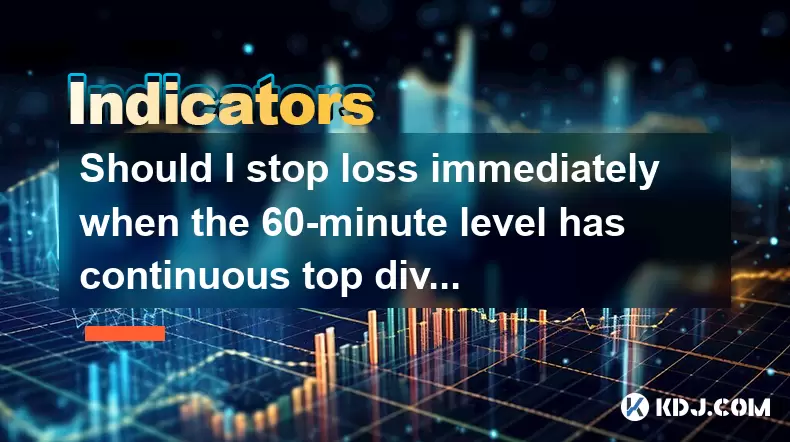
Should I stop loss immediately when the 60-minute level has continuous top divergence?
Jun 17,2025 at 05:28pm
Understanding Top Divergence in the 60-Minute ChartIn cryptocurrency trading, top divergence refers to a technical signal where the price of an asset makes higher highs while the indicator (often RSI or MACD) makes lower lows. This is commonly interpreted as a sign of weakening momentum and potential reversal. When this occurs on the 60-minute chart, it...
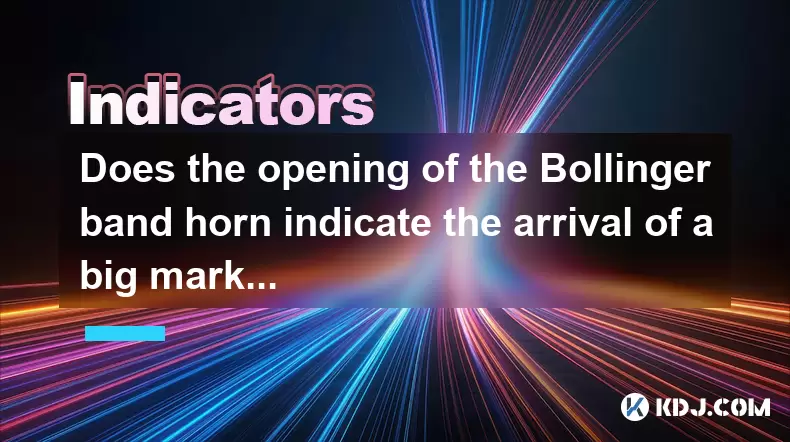
Does the opening of the Bollinger band horn indicate the arrival of a big market?
Jun 17,2025 at 06:28pm
Understanding the Bollinger Bands and Their StructureBollinger Bands are a widely used technical analysis tool in the cryptocurrency market, developed by John Bollinger. They consist of three lines: a simple moving average (SMA), typically set at 20 periods, and two standard deviation bands above and below this SMA. These bands dynamically expand and co...
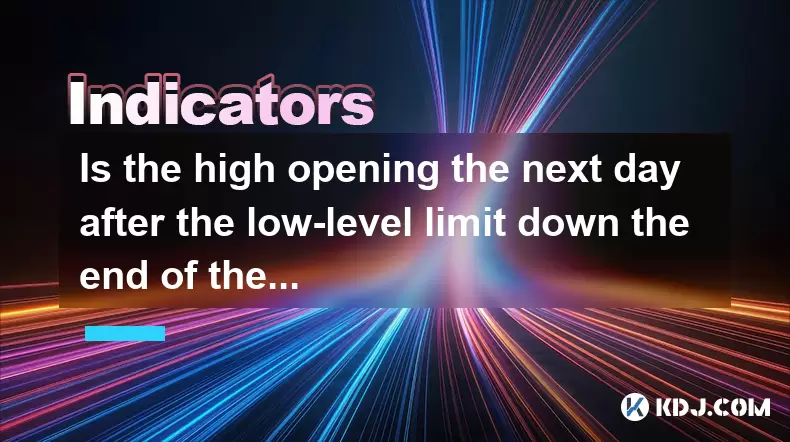
Is the high opening the next day after the low-level limit down the end of the wash?
Jun 17,2025 at 05:57pm
Understanding the Concept of a Limit Down and Its ImplicationsIn the world of cryptocurrency trading, a limit down refers to a situation where the price of a digital asset drops sharply, reaching its maximum allowable decline within a specific time frame. This mechanism is often seen on exchanges that implement daily price limits to prevent excessive vo...
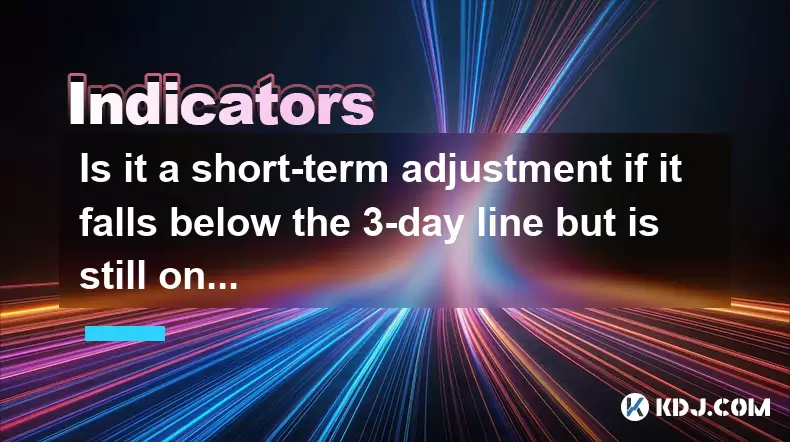
Is it a short-term adjustment if it falls below the 3-day line but is still on the 10-day line?
Jun 17,2025 at 04:07pm
Understanding the 3-Day and 10-Day Moving AveragesIn cryptocurrency trading, moving averages are essential tools for gauging trend strength and potential reversals. The 3-day moving average is a short-term indicator that reflects recent price action with minimal lag, making it highly sensitive to sudden market shifts. In contrast, the 10-day moving aver...
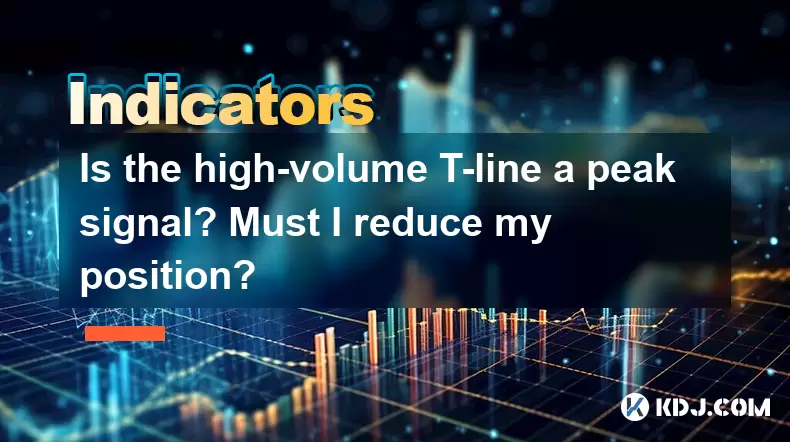
Is the high-volume T-line a peak signal? Must I reduce my position?
Jun 17,2025 at 06:07pm
Understanding the T-Line Pattern in Cryptocurrency TradingIn cryptocurrency trading, technical patterns are frequently used by traders to anticipate price movements. One such pattern is the T-line, which appears on candlestick charts and is characterized by a long upper or lower shadow with little or no body. A high-volume T-line occurs when this patter...
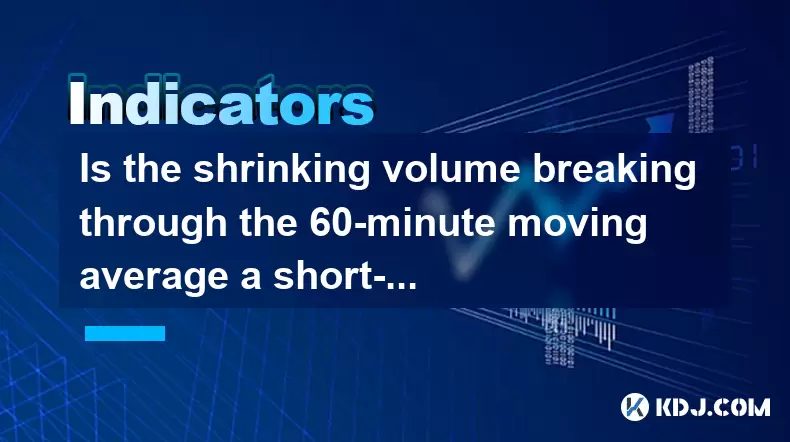
Is the shrinking volume breaking through the 60-minute moving average a short-term weakness? Should I run?
Jun 17,2025 at 06:21pm
Understanding the 60-Minute Moving Average in Cryptocurrency TradingIn cryptocurrency trading, the 60-minute moving average is a popular technical indicator used by traders to assess short-term trends. This metric calculates the average price of an asset over the last 60 minutes and updates with each passing minute. Traders often use it to identify pote...

Should I stop loss immediately when the 60-minute level has continuous top divergence?
Jun 17,2025 at 05:28pm
Understanding Top Divergence in the 60-Minute ChartIn cryptocurrency trading, top divergence refers to a technical signal where the price of an asset makes higher highs while the indicator (often RSI or MACD) makes lower lows. This is commonly interpreted as a sign of weakening momentum and potential reversal. When this occurs on the 60-minute chart, it...

Does the opening of the Bollinger band horn indicate the arrival of a big market?
Jun 17,2025 at 06:28pm
Understanding the Bollinger Bands and Their StructureBollinger Bands are a widely used technical analysis tool in the cryptocurrency market, developed by John Bollinger. They consist of three lines: a simple moving average (SMA), typically set at 20 periods, and two standard deviation bands above and below this SMA. These bands dynamically expand and co...

Is the high opening the next day after the low-level limit down the end of the wash?
Jun 17,2025 at 05:57pm
Understanding the Concept of a Limit Down and Its ImplicationsIn the world of cryptocurrency trading, a limit down refers to a situation where the price of a digital asset drops sharply, reaching its maximum allowable decline within a specific time frame. This mechanism is often seen on exchanges that implement daily price limits to prevent excessive vo...

Is it a short-term adjustment if it falls below the 3-day line but is still on the 10-day line?
Jun 17,2025 at 04:07pm
Understanding the 3-Day and 10-Day Moving AveragesIn cryptocurrency trading, moving averages are essential tools for gauging trend strength and potential reversals. The 3-day moving average is a short-term indicator that reflects recent price action with minimal lag, making it highly sensitive to sudden market shifts. In contrast, the 10-day moving aver...

Is the high-volume T-line a peak signal? Must I reduce my position?
Jun 17,2025 at 06:07pm
Understanding the T-Line Pattern in Cryptocurrency TradingIn cryptocurrency trading, technical patterns are frequently used by traders to anticipate price movements. One such pattern is the T-line, which appears on candlestick charts and is characterized by a long upper or lower shadow with little or no body. A high-volume T-line occurs when this patter...

Is the shrinking volume breaking through the 60-minute moving average a short-term weakness? Should I run?
Jun 17,2025 at 06:21pm
Understanding the 60-Minute Moving Average in Cryptocurrency TradingIn cryptocurrency trading, the 60-minute moving average is a popular technical indicator used by traders to assess short-term trends. This metric calculates the average price of an asset over the last 60 minutes and updates with each passing minute. Traders often use it to identify pote...
See all articles

























































































